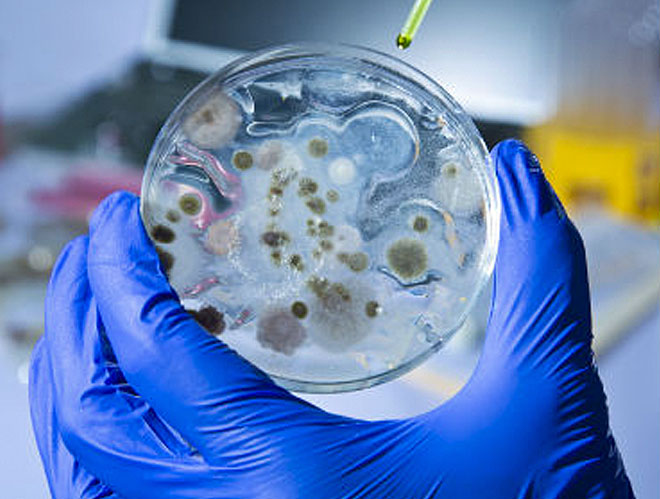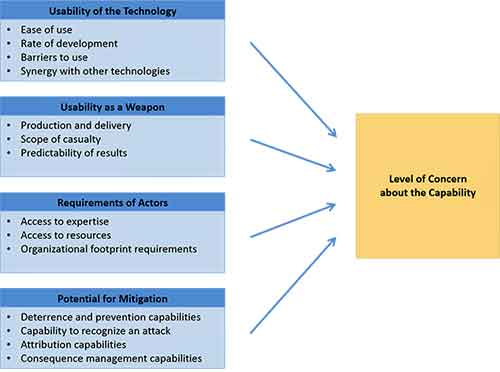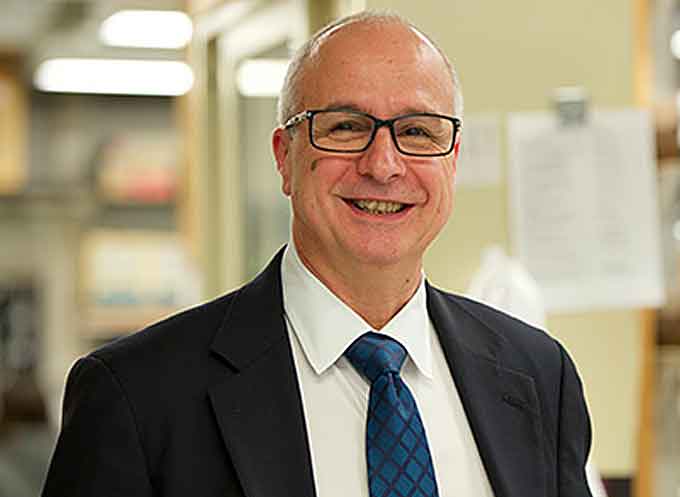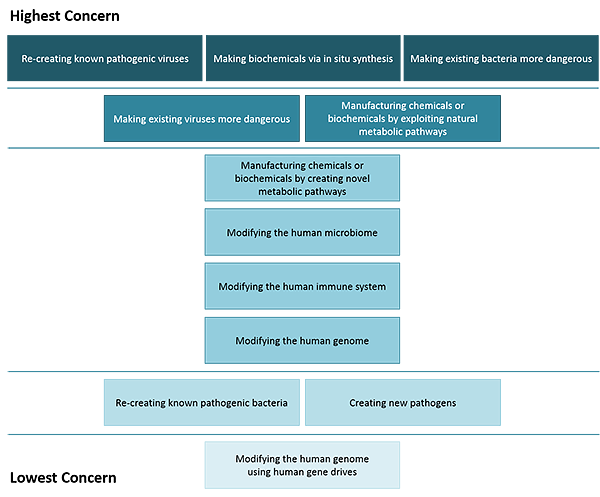
Synthetic biology expands the possibilities for creating new weapons — including making existing bacteria and viruses more harmful — while decreasing the time required to engineer such organisms, concludes a new report by the National Academies of Sciences, Engineering, and Medicine.
Although some malicious applications of synthetic biology may not seem plausible right now, they could become achievable with future advances.
Synthetic biology, a field that creates technologies for engineering or creating organisms, is being used for a variety of purposes that benefit society.
Applications include treating diseases, improving agricultural yields, and remediating pollution.
(Learn More. Michael Imperiale, a virologist at the University of Michigan and member of the National Science Advisory Board for Biosecurity, weighs in on recommendation to withhold public details on studies involving transmission of deadly bird flu virus. Courtesy of Michigan Medicine and YouTube. Posted on Jan 31, 2012.)
Even though synthetic biology holds great promise in many areas, it is possible to imagine harmful uses that could threaten U.S. citizens and military personnel.
To better prepare for potential misuse, the National Academies were asked by the U.S. Department of Defense (DOD) to develop a framework for evaluating security concerns related to advances in synthetic biology.
The task included assessing the levels of concern warranted for such advances, and recommending potential options to anticipate and respond to such threats.

“In and of itself, synthetic biology is not harmful. The level of concern depends on the specific applications or capabilities that it may enable,” said Michael Imperiale, Arthur F. Thurnau Professor of Microbiology and Immunology at the University of Michigan and chair of the committee that conducted the study and wrote the report.
“The U.S. government should pay close attention to this rapidly progressing field, just as it did to advances in chemistry and physics during the Cold War era.”

In its interim report, the committee proposed a strategic framework to identify and prioritize potential areas of concern associated with the field and to help biodefense analysts as they consider the current and future synthetic biology capabilities.
The framework is designed for analyzing existing biotechnology tools in order to evaluate the dangers at present, understand how various technologies compare with and complement each other, and assess the implications of new experimental outcomes.
In the final report, the committee used this framework to analyze potential vulnerabilities enabled by synthetic biology.
The results were based on the availability and ease of use of the technologies, the challenges of producing an effective weapon, the expertise and resources required to carry out an attack, and both proactive and reactive measures that might be taken to help mitigate the effects of an attack.
The committee ranked the synthetic biology capabilities from highest relative level of concern to lowest in the figure below.

The report emphasizes that many of the traditional approaches of biological and chemical defense will be relevant to synthetic biology-enabled threats, but the field will also present new challenges.
DOD and its partners should continue to explore strategies that can be applied to a wide range of threats and also to account for broader capabilities enabled by the field now and in the future.
Since synthetic biology-enabled weapons might be unpredictable and hard to monitor or detect, DOD should consider evaluating how the public health infrastructure needs to be strengthened to adequately recognize a potential attack.
“It’s impossible to predict when specific enabling developments will occur; the timelines would depend on commercial developments as well as academic research, and even converging technologies that may come from outside this field,” added Imperiale.
“So it is important to continue monitoring advances in synthetic biology and other technologies that may affect current bottlenecks and barriers, opening up more possibilities.”
(Learn More. See a fascinating overview of the history and ongoing impacts that the National Academies of Sciences, Engineering, and Medicine have on society. Courtesy of the National Academies of Sciences, Engineering, and Medicine and YouTube. Posted on Aug 7, 2017.)
The National Academies of Sciences, Engineering, and Medicine are private, nonprofit institutions that provide independent, objective analysis and advice to the nation to solve complex problems and inform public policy decisions related to science, technology, and medicine.
The National Academies operate under an 1863 congressional charter to the National Academy of Sciences, signed by President Lincoln.
Copies of Biodefense in the Age of Synthetic Biology are available at www.nap.edu or by calling 202-334-3313 or 1-800-624-6242.
Learn More…
(Courtesy of MIT Industrial Liaison Program (ILP) and YouTube. Posted on Sep 28, 2017.)
















